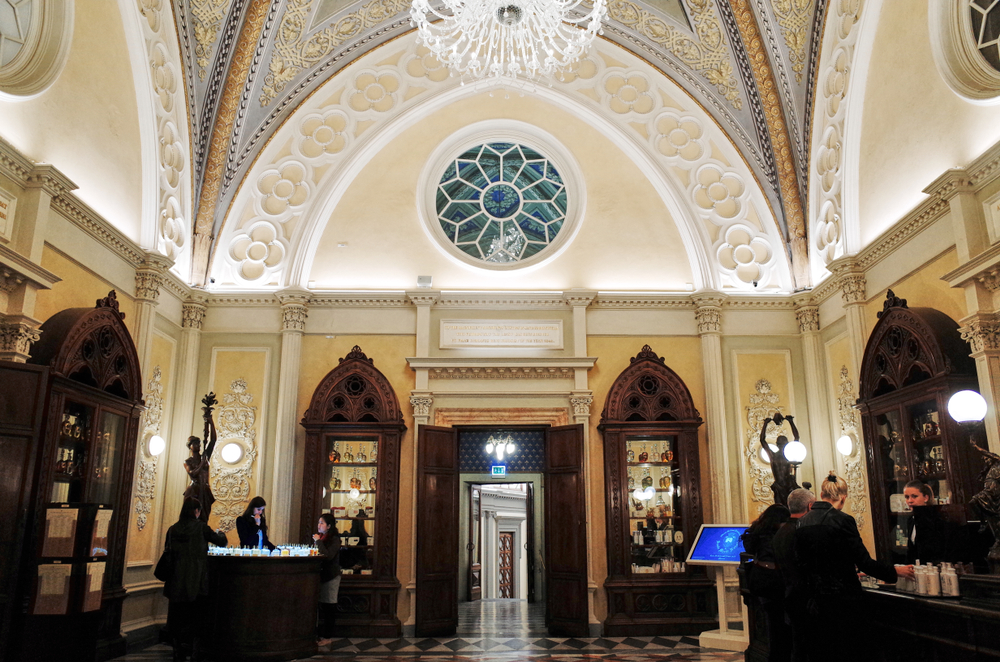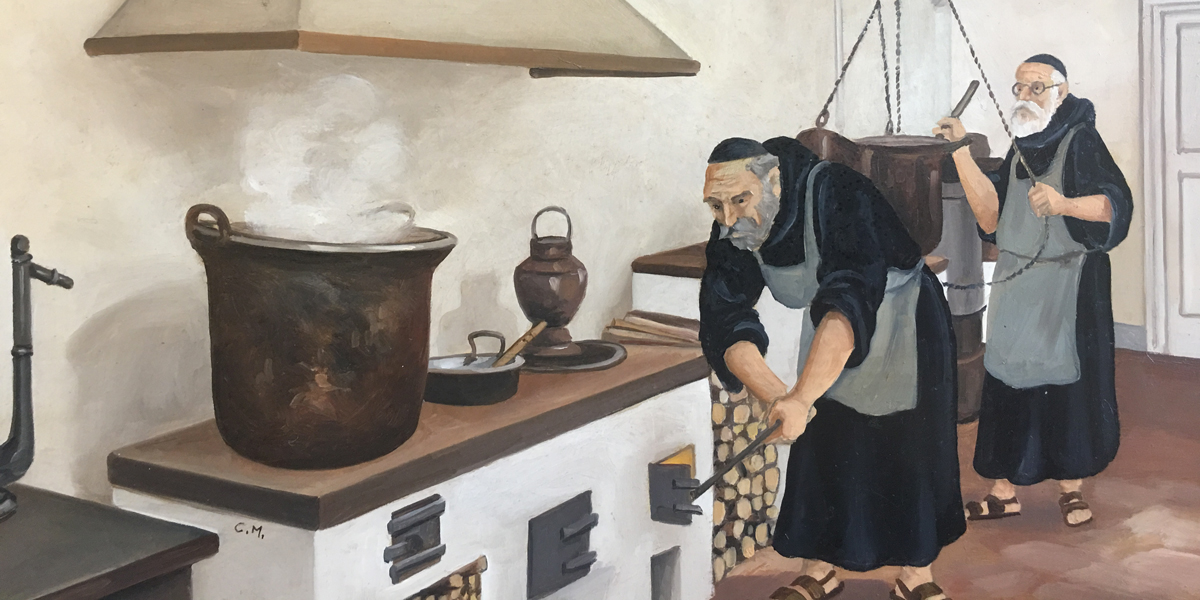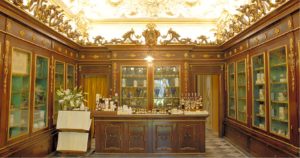Located next to the Basilica of Santa Maria Novella is one of the world’s oldest pharmacies. Founded in 1221, the Profumo-Farmaceutica di Santa Maria Novella is an off-the-grid, hidden treasure trove waiting to be discovered by beauty lovers and pharmaceutical history aficionados.
Every day, more than two thousand visitors walk through the doors of this pharmacy into a world of handmade luxury perfumes, soaps and beauty products.

Despite its unassuming exterior, the inside of the pharmacy is elevated with the aromas of florals and spices and decorated with elegant chandeliers, stained-glass windows, ornate-furniture and bronze and marble statues.
Nonetheless, this opulent interior carries a humble past as a once-apothecary run by Dominican friars.

© Inspirock
An illustrious history of the apothecary
Called to care for the outcast and ostracised, the Dominican monks from the nearby church grew medicinal herbs and other curative ingredients in their monastery gardens. These they would turn into balms, ointments and other tinctures to aid the sick and infirm during the turbulent Middle Ages.
As the bubonic plagues raged through Europe, the monks noticed that roses were resistant to certain pests. Thinking that rose petals might contain unique properties fit to combat pestilence, the monks invented rosewater. While these distilled petals didn’t do much in terms of preventing the plague, they evolved into the basis of the bestselling rosewater toners sold today.

The infamous Florence-born French queen, Catherine de’ Medici, commissioned the monks to create a signature fragrance for her wedding—the “Eau de la Reine”. This perfume was a groundbreaking invention, as the monks melded sweet-smelling essential oils with alcohol instead of other more greasy and rancid substances like vinegar, which was popular at the time.

© Officina Profumo-Farmaceutica di Santa Maria Novella Firenze 1612-2019
This fragrance has been renamed the “Acqua di Santa Maria Novella”, but the unique scent of aromatic spices remains unchanged and is still one of the pharmacy’s most iconic products. Every bottle is capped, sealed and packaged by hand.

News of these quality products spread to the outside world. By the 1600s, the friars’ humble apothecary was a well-known name in Italy and beyond.
As demand for their products increased, the little apothecary became a fully-fledged pharmacy catering to locals and visitors from afar. Except for short periods of closure during the world wars, this pharmacy has provided loyal customers with herbal remedies and natural cosmetics for more than six hundred consecutive years.

The cult beauty products combining science and history
Today, this Florentine company continues to count royalty among its customers. Bluebloods from Japan and the United Arab Emirates number among its cult-following customers. Tradition and innovation go hand in hand as ancient preparation methods and modern laboratory science work in harmony to keep the original spirit of the Dominican friars alive.

© Associazione Culturale Marginalia
The pharmacy’s garden remains the source of most of the herbs and flowers used as ingredients. The signature potpourri mixture of buds, leaves and flower petals typical of the Tuscan hills comes in a hand-embroidered silk pouch or a little terracotta jars. No costs are cut even for the most unassuming products.

© Blondeinbahrain
This history of this fascinating pharmacy has been brilliantly conserved. A museum at the pharmacy building’s basement contains significant artefacts, including hand-written books by the Friars on their ancient pharmaceutical rituals. Centuries-old soap makers and pharmaceutical pottery pieces can also be found.
While several medieval recipes are still in production (such as the rosewater toner), they are, of course no longer used for severe pathologies and illnesses. Throughout the centuries, the focus of this pharmacy shifted towards modern cosmetics, skin and body care products and even liqueurs.

One of the most luxurious ingredients used in the pharmacy’s products are the famous Florentine irises. These blossoms take years to grow and mature before they can be processed into a powder-form or extracted into essential oils. Each litre of essential oil costs an astounding thirty thousand euros.
Other commercial cosmetic companies would shy away from such a heftily priced element, but the pharmacy stands behind the quality of their products and the effectiveness of time-tested ingredients. Indeed, this iris is even featured in a special toothpaste.

This commitment to time-tested ingredients does not mean that the pharmacy is detrimentally entrenched in the old ways. Popular products such as perfumes have evolved along with the changing needs of society.
While these fragrances were once used to mask the pervasive scent of disease and waste during the Middle Ages, they no longer serve that function and the Profumo-Farmaceutica di Santa Maria have adapted their products accordingly.

© toctocfirenze.it
Ultimately, you won’t be finding any short-lived trends or fading fads here. Centuries-old recipes are not reformulated as much as they are refined and reinvigorated—much like the pharmacy’s various incarnations from a trusted Dominican apothecary to a luxury pharmacy.
Ancient methods of preparation and well-loved recipes remain till this day, but more importantly, the spirit of the place has retained its humility despite its upscale appearance.

Similar to the friars of old, the pharmacy’s staff aid in answering questions and providing suggestions based on every customer’s needs. The pharmacy’s commercial director maintains that everyone, regardless of how he may look or dress, is more than welcomed in this space.
Find cheap flights to Florence
Featured image © Officina Profumo Farmaceutica di Santa Maria Novella











